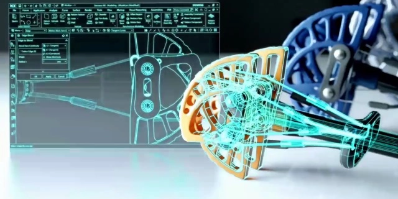Optimize with SAP Asset Performance Management
Enhance asset performance. Experience SAP Asset Performance Management for efficiency and reliability today.
REQUEST A FREE PRODUCT GUIDE
Get Product Guide
Unlock unparalleled insights into your asset performance with SAP Asset Performance Management (APM). Optimize maintenance, minimize downtime, and boost efficiency. Download now to revolutionize your approach to asset management.




SAP APM uses advanced analytics to predict maintenance needs, leading to lower maintenance costs and reduced downtime.
SAP APM enables real-time performance monitoring, providing insight into asset performance to enable proactive decision making.
SAP APM Asset Optimization helps teams to get the most value out of their assets and expand their lifespan.
Advanced risk analytics helps to prioritize assets for maintenance, enabling teams to focus on the most critical ones first.
SAP APM is optimized for mobile, enabling field staff to access relevant data on-site and on the move.
SAP APM provides powerful analytics tools and capabilities for data-driven decisions and continuous improvement.
| NX MACH Designer |
NX Layout |
NX MACH 1 Design |
NX MACH 2 Product Design |
NX Cool Shape Design |
NX MACH 3 Product Design |
NX MACH 3 Industrial Design |
|
|---|---|---|---|---|---|---|---|
| Feature category | |||||||
| Feature | ✓ | ✓ | ✓ | ✓ | ✓ | ✓ | ✓ |
| Feature | ✓ | ✓ | ✓ | ✓ | ✓ | ✓ | ✓ |
| Feature | ✓ | ✓ | ✓ | ✓ | ✓ | ✓ | ✓ |
| Feature | ✓ | ✓ | ✓ | ✓ | ✓ | ✓ | ✓ |
| Feature | ✓ | ✓ | ✓ | ✓ | ✓ | ✓ | ✓ |
| Feature | ✓ | ✓ | ✓ | ✓ | ✓ | ✓ | ✓ |

Enhance asset performance. Experience SAP Asset Performance Management for efficiency and reliability today.
SAP Asset Performance Management (APM) stands as a pivotal solution for businesses seeking unparalleled reliability and efficiency in their operations. This cutting-edge platform offers real-time insights into asset health, enabling predictive maintenance strategies. By leveraging advanced analytics and IoT integration, organizations can proactively identify and address potential issues, minimizing downtime and optimizing asset performance. SAP APM's comprehensive view of asset data fosters data-driven decision-making, empowering businesses to enhance operational excellence, reduce costs, and extend the lifespan of critical assets.

SAP APM transforms the landscape of asset management by optimizing reliability and productivity. The solution facilitates a proactive approach to maintenance, ensuring that assets operate at peak performance levels. Through continuous monitoring and predictive analytics, organizations can identify patterns and trends, allowing for timely interventions and preventing costly breakdowns. By integrating with business processes, SAP APM aligns asset management strategies with overall business goals. This not only enhances the reliability of assets but also contributes to increased productivity, reduced operational risks, and long-term sustainability for businesses in a dynamic and competitive environment.


Enhance asset performance. Experience SAP Asset Performance Management for efficiency and reliability today.
SAP Asset Performance Management (APM) stands as a pivotal solution for businesses seeking unparalleled reliability and efficiency in their operations. This cutting-edge platform offers real-time insights into asset health, enabling predictive maintenance strategies. By leveraging advanced analytics and IoT integration, organizations can proactively identify and address potential issues, minimizing downtime and optimizing asset performance. SAP APM's comprehensive view of asset data fosters data-driven decision-making, empowering businesses to enhance operational excellence, reduce costs, and extend the lifespan of critical assets.

SAP APM transforms the landscape of asset management by optimizing reliability and productivity. The solution facilitates a proactive approach to maintenance, ensuring that assets operate at peak performance levels. Through continuous monitoring and predictive analytics, organizations can identify patterns and trends, allowing for timely interventions and preventing costly breakdowns. By integrating with business processes, SAP APM aligns asset management strategies with overall business goals. This not only enhances the reliability of assets but also contributes to increased productivity, reduced operational risks, and long-term sustainability for businesses in a dynamic and competitive environment.

In the competitive landscape of industrial machinery, the relentless pursuit of innovation is the hallmark of success. For XYZ Corp, a longstanding player in the industry, this pursuit was no less than a mission.
Faced with the challenge of keeping pace with the rapid advancements in technology, they embarked on a transformational journey that would redefine the way they approached manufacturing.

In the competitive landscape of industrial machinery, the relentless pursuit of innovation is the hallmark of success. For XYZ Corp, a longstanding player in the industry, this pursuit was no less than a mission.
Faced with the challenge of keeping pace with the rapid advancements in technology, they embarked on a transformational journey that would redefine the way they approached manufacturing.

In the competitive landscape of industrial machinery, the relentless pursuit of innovation is the hallmark of success. For XYZ Corp, a longstanding player in the industry, this pursuit was no less than a mission.
Faced with the challenge of keeping pace with the rapid advancements in technology, they embarked on a transformational journey that would redefine the way they approached manufacturing.

SAP APM is an industry-leading asset performance optimization software
SAP APM differs in its predictive maintenance, analytics, and data-driven decision-making capabilities, putting it ahead of other APM tools.
Lower costs, higher performance metrics, and accurate risk management are just a few of many SAP APM benefits.
Organizations can use SAP APM to monitor and analyze the energy consumption of their assets, thus enabling the identification of inefficiencies.
SAP APM uses data collected from sensors, measurement reports from other cloud systems, and historical information, among other things.